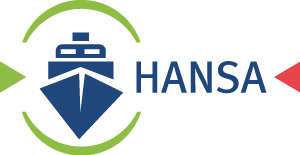 Safe and efficient operation of vessels is the primary goal in the shipping domain. Regulations require a vessel’s route to be planned from “berth to berth” prior to the vessel’s departure. When planning the route one can rely on a number of error checking functionalities, like unsafe water depths or sailing to close to land for instance. But these functionalities are entirely based on static information available and do not consider past experiences and practices.
Safe and efficient operation of vessels is the primary goal in the shipping domain. Regulations require a vessel’s route to be planned from “berth to berth” prior to the vessel’s departure. When planning the route one can rely on a number of error checking functionalities, like unsafe water depths or sailing to close to land for instance. But these functionalities are entirely based on static information available and do not consider past experiences and practices.
With HANSA, we are closing this gap. By big data analysis, HANSA provides a route checking functionality, which validates the currently planned route against information, where similar vessels have successfully sailed in the past, and also takes the environmental context of e.g. winds and water currents into account. Support is offered in planning and execution of the voyage.
In the planning phase, the mariner can check the planned route against prior experiences by having a recommended route corridor displayed. Whereas the recommended corridor functionality is intended purely as an additional and supportive tool for route planning, the final decision on executing the voyage will remain with the mariner on board.
During the execution phase, both ship- and shore-based voyage monitoring can re-check the planned legs of the route for their validity. If for instance an accident blocking the usual shipping lane has happened, there would be an update as to where other vessels have sailed recently, thus pointing out the need to review the route. For the case that heavy weather or unexpected environmental events impede with shipping lanes or common routes, the resulting change of traffic flow can also be detected and incorporated into adjusted recommended corridors for vessels which are going to sail that area in the near future.
Recommended routing corridors can also be used in VTS centers to check for anomalies in vessel movements. In that way, VTS or CSS operators can use this functionality to enhance the situational awareness in respect to their monitored traffic area because it gives them the chance to predict or anticipate traffic events much better than without it.
Deliverables
D1.1 – Routing Corridor Concept
Partner

Funding
HANSA is funded by the MarTERA partners German Federal Ministry of Economic Affairs and Energy (BMWi), Polish National Centre for Research and Development (NCBR) and Research Council of Norway (RCN) and co-funded by the European Union.
